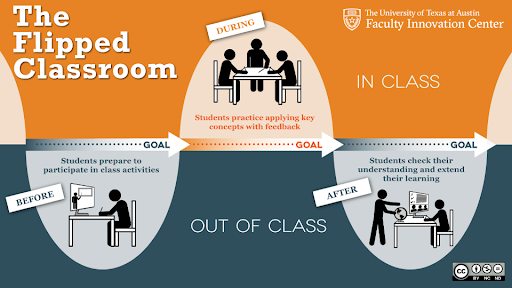Flipped Learning Network: strategies to create a “group space is transformed into a dynamic, interactive learning environment where the educator guides students as they apply concepts and engage creatively in the subject matter.” (Kari Afrstrom)
Origins of Flipped Learning: Bergmann and Arfstrom, high school teachers, focused on providing content through video lecture prior to class to enable active, applied activities to enact that learning in class. Their book is Flipped Learning, and The Journal published an interview with them.
Thinking routines: Helenrose Fives’s Visible Thinking Routines and Harvard’s Project Zero.
Vanderbilt University Center for Teaching.
WAC, Writing Across the Curriculum Clearinghouse: strategies to use writing to promote learning in any subject.
Carnegie Mellon University’s Eberly Center.
Sources
Bergmann, J., & Sams, A. (2012). Flip your classroom: Reach every student in every class every day. International society for technology in education.
Graham, Steve; Michael Hebert; Writing to Read: A Meta-Analysis of the Impact of Writing and Writing Instruction on Reading. Harvard Educational Review 1 December 2011; 81 (4): 710–744.
Lage, M, Platt, Gl, & Treglia, M. Inverting the classroom: A gateway to creating an inclusive learning environment. The Journal of Economic Education 31 (1): 30-43.
McCrindle, A. R., & Christensen, C. A. (1995). The impact of learning journals on metacognitive and cognitive processes and learning performance. Learning and Instruction, 5(2), 167–185.
Quitadamo, I. J. and M. J. Kurtz (2007). “Learning to Improve: Using Writing to Increase Critical Thinking Performance in General Education Biology.” CBE—Life Sciences Education 6(2): 140-154.

